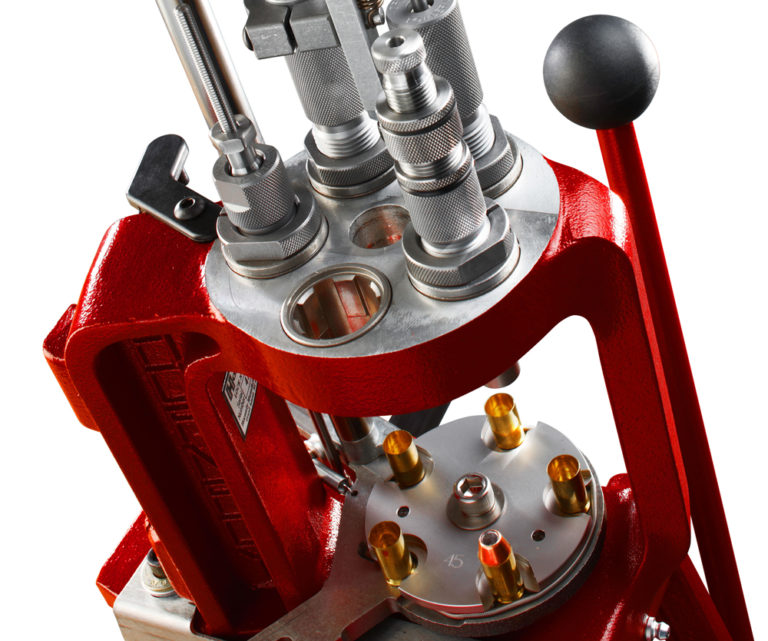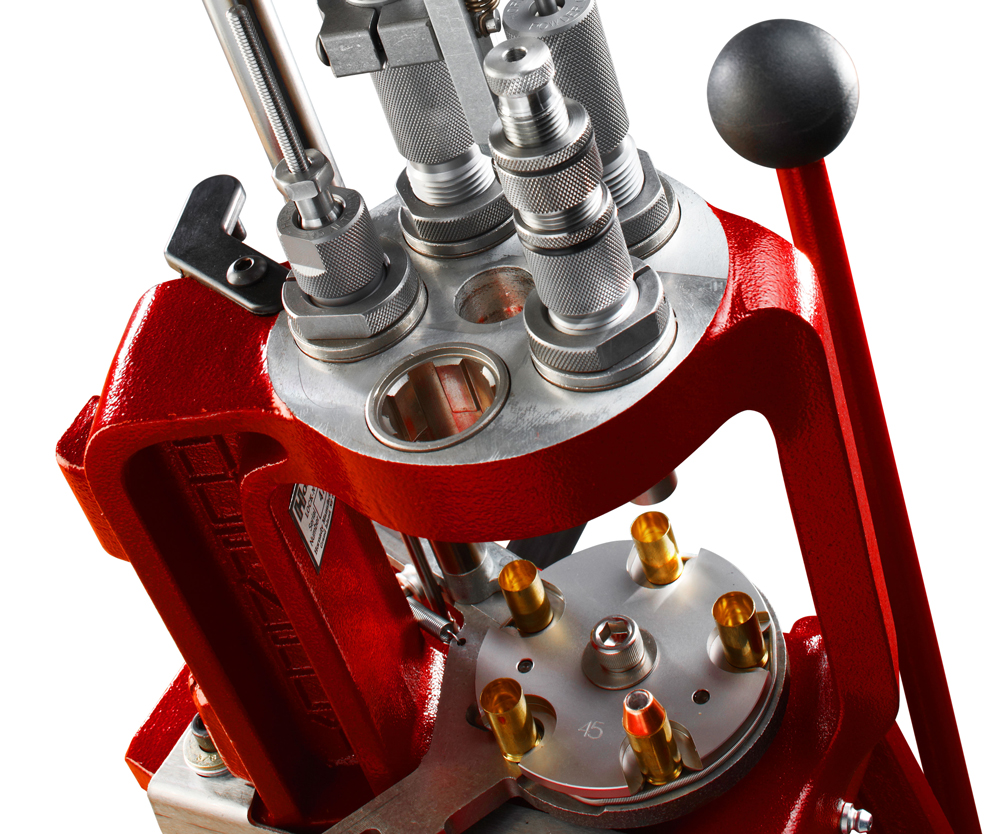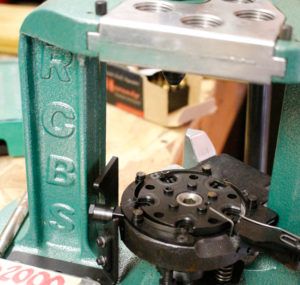

There comes a time for many reloaders when the volume of their ammunition needs outgrows the function of their single-stage press. That's when it becomes time to start looking at progressive presses for handloading.
For those shooters who dispense a high volume of ammunition from their pistols, progressive presses can be a worthwhile investment.
When properly adjusted, and running right, the progressive can produce several hundred rounds per hour. There are many different types to choose from, but the basic premise is the same.The idea of the progressive is to perform multiple operations with each stroke of the press.
Most are auto-indexing, meaning that the shell plate will automatically rotate to the next station when the handle is pulled and pushed. De-priming, resizing, priming, flaring, installation of powder, bullet seating and crimping are all handled by different stations within the press. A store of powder is held in the powder thrower, which can be calibrated to drop a specific amount of powder, and is often activated by the case's mouth.
Some progressive presses use a metal tube to store the new primers, others feed them through means of a plastic strip. Either method must be watched carefully, as the detonation of a primer could start a chain reaction of primer explosions. Being in close proximity to an appreciable amount of powder, this scenario could end in tragedy.
I like the progressives with at least five stations, and preferably seven. This allows for a separate crimp die to be used, especially in the case of cartridges like the .45ACP, .40S&W and 9mm Luger, that require a squared case mouth for headspacing.
Powder throwers are simple devices, but can be finicky creatures. They must be calibrated precisely, and that may take some trial and error, but it's an important process. An overcharge of .2 grains can result in some very dangerous pressures. Equally, an undercharge can produce a lodged bullet or, at best, a squib load that rolls out of the barrel at a highly reduced velocity. I check the charge thrown often on a balance-beam scale to verify its weight and keep things safe.
One technique that will help keep things consistent is practicing your press stroke. The idea is to make sure to use the same amount of pressure each time you pull the lever, even if that seems to cut down on the volume of ammunition made per hour. Uniformity is the key here, and as things are sort of automated the press stroke can be a huge variable.

Mind you, once all stations are filled that one stroke of the ram will be responsible for seating a new primer, as well as seating a new bullet to the proper depth. That same stroke must be raised all the way up to properly and uniformly dispense the powder. The same can be said for seating depth.
As things progress (pun fully intended), it is not uncommon for the seating die to come out of adjustment. So, keep a close eye on the finished product, and measure often to assure yourself that the seating depth hasn’t changed.
I also like to segregate my brass into lots, defined by headstamp, so the crimp doesn’t get wacky if the brass gets slightly thicker or thinner.
Progressive presses can certainly be an asset to the high volume shooter, but they require a bit of babysitting. So keep your rig well adjusted and you’ll be cranking out good stuff for years to come.

Next Step: Get your FREE Printable Target Pack
Enhance your shooting precision with our 62 MOA Targets, perfect for rifles and handguns. Crafted in collaboration with Storm Tactical for accuracy and versatility.
Subscribe to the Gun Digest email newsletter and get your downloadable target pack sent straight to your inbox. Stay updated with the latest firearms info in the industry.

![Best Concealed Carry Guns In 2025 [Field Tested] Wilson Combat EDC X9S 1](https://gundigest.com/wp-content/uploads/Wilson-Combat-EDC-X9S-1-324x160.jpg)


![Best 9mm Carbine: Affordable PCCs [Tested] Ruger Carbine Shooting](https://gundigest.com/wp-content/uploads/Ruger-Carbine-Shooting-100x70.jpg)
![Best AR-15: Top Options Available Today [Field Tested] Harrington and Richardson PSA XM177E2 feature](https://gundigest.com/wp-content/uploads/Harrington-and-Richardson-PSA-XM177E2-feature-100x70.jpg)
